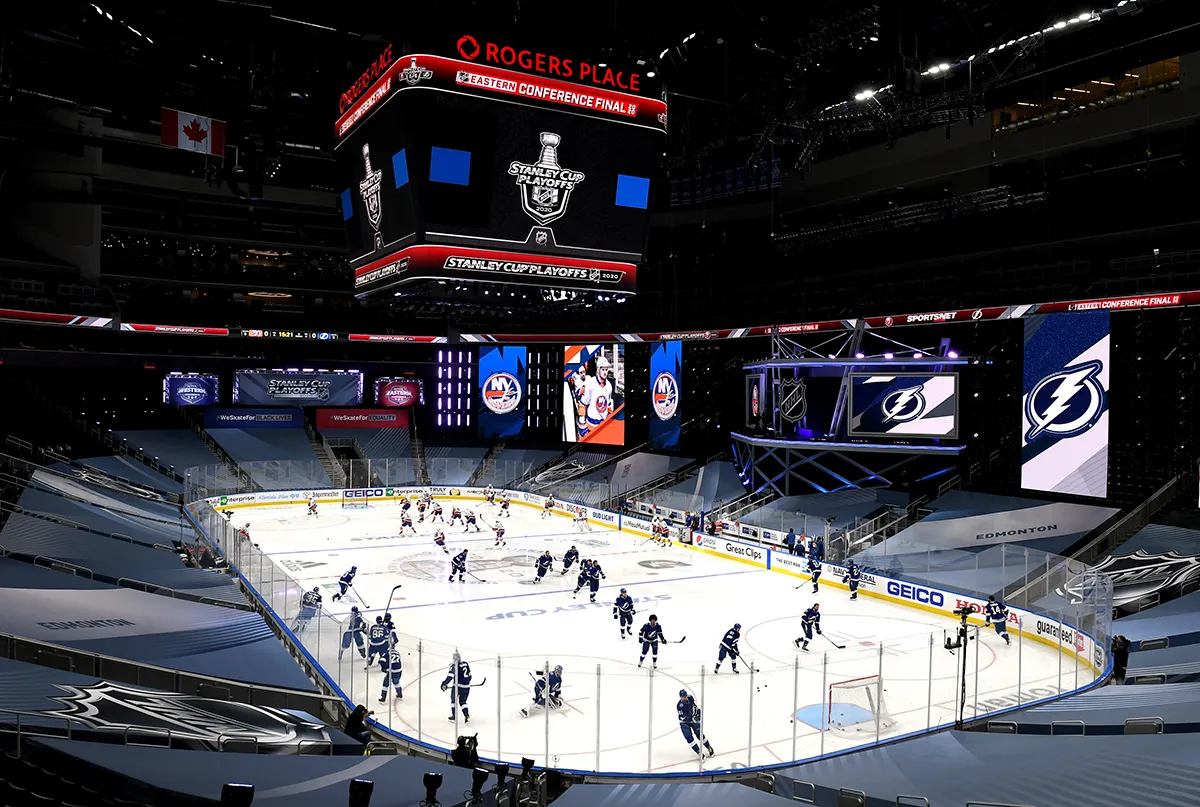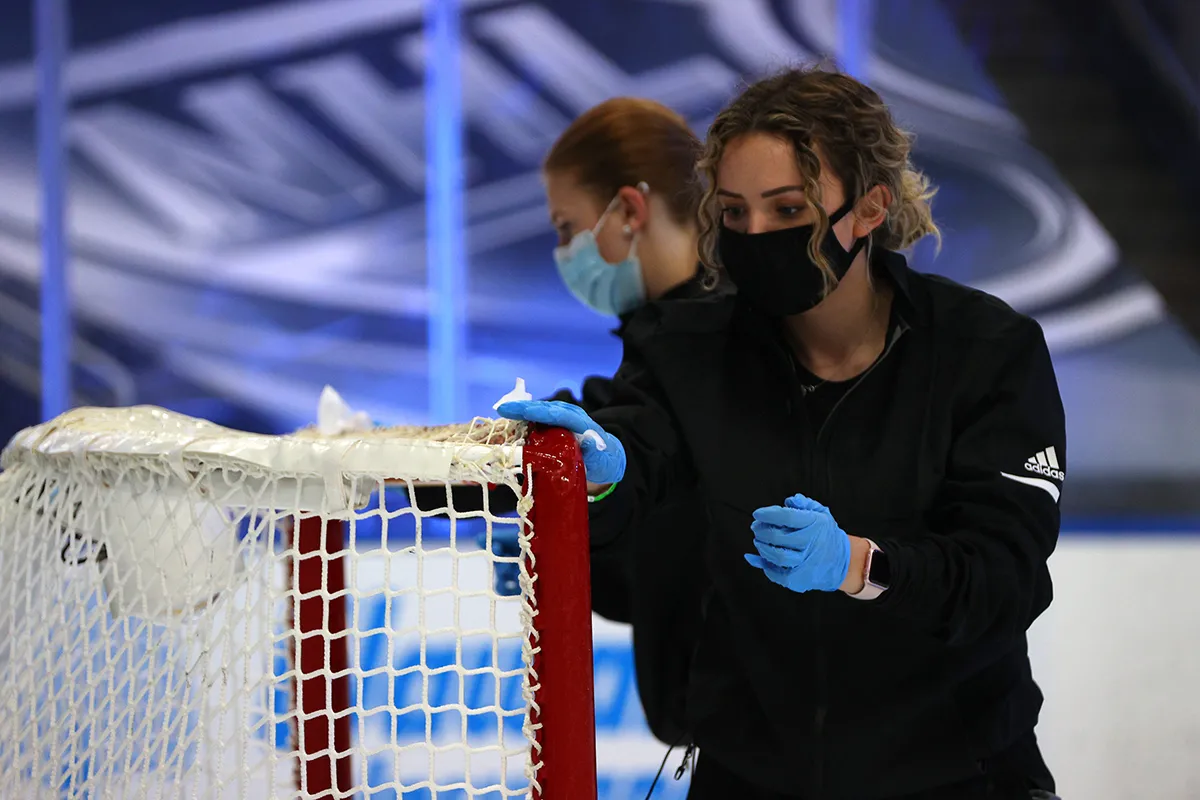Like millions of people this past spring, Steve Mayer ’84 was stunned when the coronavirus pandemic swept across the country, causing businesses and industries everywhere to pause activities for employee health and safety.
The National Hockey League — where Mayer serves as the senior executive vice president and chief content officer — was no exception. The NHL paused its season on March 12, with 189 games remaining in the season, including the Stanley Cup Playoffs. And no one knew if it would be able to resume.
“When it happened, it was shocking,” Mayer said. “None of us knew the impact it would have, so we got together as a league and asked how we were going to finish the season. We thought the stoppage was going to last a week or two.

